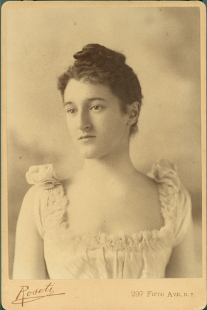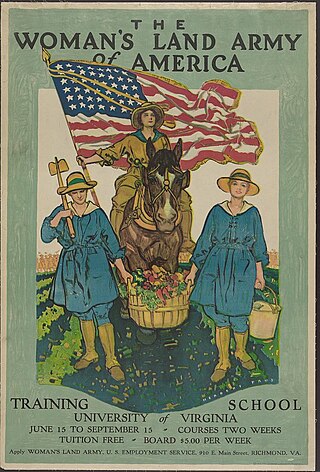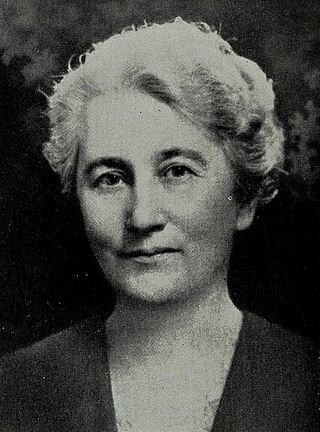
Beatrix Cadwalader Farrand was an American landscape gardener and landscape architect. Her career included commissions to design about 110 gardens for private residences, estates and country homes, public parks, botanic gardens, college campuses, and the White House. Only a few of her major works survive: Dumbarton Oaks in Washington, D.C., the Abby Aldrich Rockefeller Garden on Mount Desert, Maine, the restored Farm House Garden in Bar Harbor, the Peggy Rockefeller Rose Garden at the New York Botanical Garden, and elements of the campuses of Princeton, Yale, and Occidental.

The Arnold Arboretum of Harvard University is a botanical research institution and free public park, located in the Jamaica Plain and Roslindale neighborhoods of Boston, Massachusetts. Established in 1872, it is the oldest public arboretum in North America. The landscape was designed by Charles Sprague Sargent and Frederick Law Olmsted and is the second largest "link" in the Emerald Necklace. The Arnold Arboretum's collection of temperate trees, shrubs, and vines has an emphasis on the plants of the eastern United States and eastern Asia, where arboretum staff and colleagues are sourcing new material on plant collecting expeditions. The arboretum supports research in its landscape and in its Weld Hill Research Building.
Mary Frederika "Freda" Kirchwey was an American journalist, editor, and publisher strongly committed throughout her career to liberal causes. From 1933 to 1955, she was Editor of The Nation magazine.

The Cornell Botanic Gardens is a botanical garden located adjacent to the Cornell University campus in Ithaca, New York. The Botanic Gardens proper consist of 25 acres (10 ha) of botanical gardens and 150 acres (61 ha) of the F. R. Newman Arboretum. The greater Botanic Gardens includes 40 different nature areas around Cornell and Ithaca, covering 4,300 acres (1,700 ha).

Miriam Van Waters was an American prison reformer of the early to mid-20th century whose methods owed much to her upbringing as an Episcopalian involved in the Social Gospel movement. During her career as a penologist, which spanned most of the years from 1914 through 1957, she served as superintendent of three prisons: Frazier Detention Home for boys and girls in Portland, Oregon; Los Angeles County Juvenile Hall for girls, and the Massachusetts Correctional Institution – Framingham, then called the Massachusetts Reformatory for Women. While in California, Van Waters established an experimental reformatory school, El Retiro, for girls age 14 to 19. In each case, Van Waters developed programs that favored education, work, recreation, and a sense of community over unalloyed incarceration and punishment.
The cultivar Ulmus 'Virens', the Kidbrook Elm, is an elm of unknown origin. It was first identified by Masters as U. virens in Hortus Duroverni 67, 1831, and later by Loudon in Arboretum et Fruticetum Britannicum, 3: 1376, 1838, as U. campestris virens. Described in some detail by Elwes & Henry (1913) as a form of Field Elm but classified as U. × hollandica by Green, the tree is not mentioned in Bean's classic works on British trees.

The Veitch Memorial Medal is an international prize issued annually by the Royal Horticultural Society (RHS).
William Douglas Cook was the founder of Eastwoodhill Arboretum, now the national arboretum of New Zealand, and one of the founders of Pukeiti, a rhododendron garden, close to New Plymouth. He was a "plantsman with the soul of a poet and the vision of a philosopher".

Frank Nicholas Meyer was a United States Department of Agriculture explorer who traveled to Asia to collect new plant species. The Meyer lemon was named in his honor.

The Lowthorpe School of Landscape Architecture is the shorthand name for a school that was founded in Groton, Massachusetts in 1901 for women to be trained in landscape architecture and horticulture. Under its original name of Lowthorpe School of Landscape Architecture, Gardening, and Horticulture for Women, the college was one of the first in the world to open the profession to women. In 1915 it was renamed the Lowthorpe School of Landscape Architecture for Women, and in 1945 it was absorbed into the Rhode Island School of Design as the Lowthorpe Department of Landscape Architecture.

The Woman's Land Army of America (WLAA), later the Woman's Land Army (WLA), was a civilian organization created during the First and Second World Wars to work in agriculture replacing men called up to the military. Women who worked for the WLAA were sometimes known as farmerettes. The WLAA was modeled on the British Women's Land Army.
Ernesta Drinker Ballard was an American horticulturalist and feminist. Among the founders of the National Organization for Women, the National Abortion and Reproductive Rights Action League, and Women's Way, Ballard was the executive director of the Pennsylvania Horticultural Society from 1963 to 1981, credited by The New York Times with bringing its annual Philadelphia Flower Show to "international prominence."
The Minnesota State Horticultural Society (MSHS), with headquarters in Roseville, Minnesota, is a nonprofit membership organization that provides education and resources to northern gardeners in the United States. It publishes Northern Gardener, a bi-monthly magazine that is the only U.S. publication devoted exclusively to gardening in Hardiness Zones 3-5. Its "Garden-in-a-Box" program provides raised bed garden boxes, along with soil and vegetable plants, to low-income families and schoolchildren in the greater Minneapolis and St. Paul, Minnesota area and elsewhere in Minnesota. "Minnesota Green" is a MSHS program that coordinates donations of plant material from growers, garden centers, and individuals to public space and community gardens. MSHS offers classes year-round on gardening subjects. MSHS currently has 10,000 members and subscribers to its publication.

Mary Rutherfurd Jay (1872–1953) was one of America's earliest landscape architects and an advocate of horticultural education and careers for women. The great-great granddaughter of American Founding Father John Jay, she grew up in Rye, New York surrounded by the gardens of her ancestral homestead at the Jay Estate in Westchester County overlooking Long Island Sound. Her education was fostered by travel abroad with her mother and domestically through classes in design and horticulture taken at the Massachusetts Institute of Technology (MIT) and the Bussey Institute in Forest Hills, Massachusetts.

The Pennsylvania School of Horticulture for Women was one of the first horticultural schools to be established by and for women in the United States, opening on February 10, 1911. As the second institution to provide women with a practical education in horticulture and landscape architecture, it made possible their entry into a professional field. Although some men were employed in faculty positions, the school's leadership was intentionally female. As of 1919, the board of trustees consisted of twenty-five prominent women citizens. All but the last director of the school were women.

Louisa Boyd Yeomans King was an American gardener and author who became a leading advocate of gardening and horticulture, especially in connection with the garden club movement. She wrote on horticultural topics as Mrs. Francis King.

Ardie A. Clark Halyard was a banker, activist and first woman president of the Milwaukee chapter of the National Association for the Advancement of Colored People (NAACP).
The field elm cultivar Ulmus minor'Viminalis Pendula', a weeping form of U. minor 'Viminalis', was first listed c.1890 as Ulmus antarctica pendulaHort., and briefly described, by the Späth nursery of Berlin, which distributed it from the late 19th century. On the continent it was also known as U. campestris antarctica pendula. Maxwell T. Masters in the Journal of the Royal Horticultural Society (1891) listed it as U. viminalis pendula.

Gertrude L. Warren (1884–1979) was an American government official and a pioneer in the 4-H movement.

Herbert R. Schaal is an American landscape architect, educator, and firm leader notable for the broad range and diversity of his projects, including regional studies, national parks, corporate and university campuses, site planning, botanical gardens, downtowns, highways, cemeteries, and public and private gardens. Schaal is one of the first landscape architects to design children's gardens, beginning in the 1990s with Gateway Elementary, Gateway Middle, and Gateway Michael Elementary school grounds in St. Louis, Missouri, the Hershey Children's Garden at the Cleveland Botanical Gardens, and Red Butte Garden and Arboretum.















